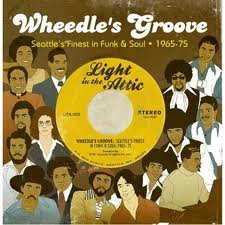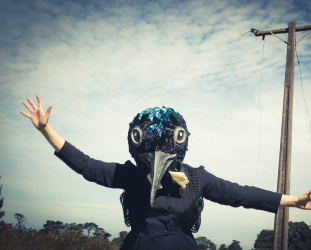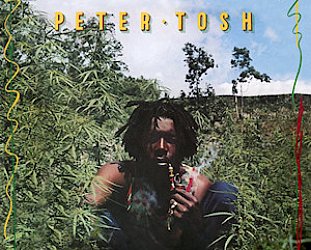Graham Reid | | 2 min read

The 2009 documentary Wheedle's Groove chronicles the brief yet intense heyday of Seattle's soul music scene, which bubbled up and simmered down again within the space of a few short years, and then spent another 30 or so in hibernation.
Ringing a familiar bell, Seattle's relative isolation from the USA's traditional social and cultural hot-spots is both a blessing and a curse. Throw in an overcast, drizzly weather pattern for three quarters of the year, and indoor artistic pursuits are set to flourish.
So was the case in the late Sixties to early-Seventies, as a tightly-concentrated black community began to embrace the soul music revolution emanating out of urban centers such as Detroit. After-hour clubs became prolific as local groups took on glorious weekend graveyard shifts. A small local label, which was primarily simply a recording studio gave many of these acts a chance to cut a few tracks, and a local community station provided an outlet.
Without the help of today's social media to spread the word, Seattle's soul scene was destined to fade away before any of it's offspring could grab a stronger foothold on the wider music landscape. All that appeared to remain 30 years later were scattered 45s in North-West thrift shops. That's where we jump in, introduced to this lost world via a dedicated DJ and record collector who began stumbling on these hidden gems in the early Noughties. Cue an independent label-led reissue of some classic works, and a Buena Vista-style reunion.
There is a wonderful cosy warmth to this film. It almost smells like a second-hand record store on a rainy day. The artists interviewed have traveled similar journeys to the ex-musician archetype, but there is a delicate insight provided, and a reflective tone that manages to avoid heavy regret. The film is almost life-affirming in the way its main characters have fallen into the mundanities of everyday life, but are obviously still lit by the fire of their memories, and the indelible urge to make music, in whatever casual form that desire now manifests itself in.
The film is light on archival footage, but it is not needed. The talking heads and Polaroids successfully carry the load. The music by the way, is splendid. Definitive time-capsule stuff. It made me feel like immersing myself in a thick blanket of analogue soul. For a quick taste, check out the film's opening cut from The Black on White Affair here.
There's also an understatement to the film typical of its locale. There is no attempt to sell this lost music as the greatest never heard, and the music's vitality is allowed to speak for itself. The collector, who's segments represent the film's glue, almost mirrors the viewer's response to his discoveries in his warm yet casual interest.
Narrated by Sir Mix-a-Lot, appearances are also made by Quincy Jones, Kenny G (jumpsuit and all), and members of Seattle alternative bands such as Soundgarden, Mudhoney and Death Cab for Cutey for added context. But the real stars are the new characters you'll get to know, such as musicians Ron Buford and Robbie Hill, and community radio DJ Robert Nesbit. Nesbit captures the essence of the film in his first short segment, and has the most snazzy soundbites (“Those weren't the old days, those were the days, those were the now, and that's what you did”).
Meanwhile Buford and Hill speak with the years in their eyes, providing the film with its deepest themes: What are our experiences destined to be, other than memories?
And how do we do justice to them after they have passed?
Oh, and if you're as curious as I was, you can learn all about the Wheedle here.
Dan Droutsos is a Wellington-based after-hours musician and an occasional arts writer who is admittedly "besotted" by the Seattle scene and has twice spent time in the city.
Elsewhere also has this on a more recent development in the Seattle soul scene.
Other Voices Other Rooms is an opportunity for Elsewhere readers to contribute their ideas, passions, interests and opinions about whatever takes their fancy. Elsewhere welcomes travel stories, think pieces, essays about readers' research or hobbies etc etc. Nail it in 1000 words or fewer and contact graham.reid@elsewhere.co.nz.
See here for previous contributors' work. It is wide-ranging, huh?





post a comment